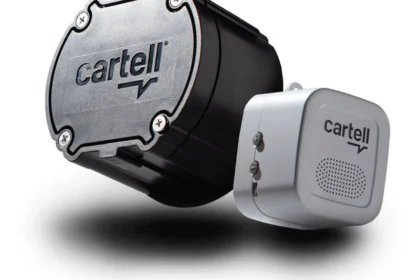Cork rolls are produced from the cork oak tree’s bark that undergoes harvesting. The cork is ground into granules, compressed under high heat and pressure, and then rolled into large sheets that are easy to install and transport. Cork Roll comes in a variety of thicknesses, commonly 2mm to 10mm or more, making them versatile enough for bulletin boards, thermal or acoustic insulation, wall coverings, and even flooring underlays.
Amid the most efficient eco-friendly materials for construction, cork has stood out as a prominent performer in the thermal insulation space. Cork rolls, among other types of cork, have gained promise for their flexibility, performance, and environmental value. From home renovation to outfitting a new modern office, rolls of cork serve as natural, effective insulators that are easy on the eyes.
Advantages of Cork Rolls on the Ecosystem
Among the many characteristics of cork that set it apart is its sustainability. Harvesting cork bark comes from a living tree, allowing it to rejuvenate and letting you harvest it repeatedly once every 9 to 12 years. This regenerative life cycle increases the lifespan of the tree and additionally helps offset carbon emissions.
Supporting North Africa, Portugal, and Spain, cork oak forests host rich biodiversity all the while aiding in carbon sequestration. Incorporating cork roll products in construction further helps mitigate dependence on synthetic, petroleum-based foams, which off-gas VOCs and contribute to environmental pollution.
Cork Rolls are Thermal And Acoustic Insulators
Cork rolls make for great insulation, owing to cork’s unique cellular structure. Each cubic centimeter of cork holds nearly 40 million cells filled with air, exhibiting this natural configuration. On the other hand, in terms of acoustics, cork has remarkable sound-dampening qualities, making it highly sought after for offices, classrooms, music studios, and even apartments. When applied to walls or floors, a cork roll acts as a buffer that reduces sound transmission from one room or floor to another.
Cork Roll for Walls
Cork rolls used for wall insulation amplify energy efficiency multifold, but they’re still not limited to that. This soft surface can also serve as a decorative and practical pinboard. Designers generally use cork wall panels and rolls to enhance the modernist style of the room and improve sound-absorbing properties, as well as mitigate environmental noise.
Flooring Underlay
Roll of Cork is generally used as underlays for hardwood, laminate, and ceramic tiles. Because of the cork, impacts are minimized, sound transfer is diminished, and general walking comfort is increased. Cork also retards moisture in some configurations, enhancing protection given to subfloors.
Roll of Cork for Decorative Use
A Roll of Cork can serve decorative purposes. Designers and do-it-yourself fans use it to cover walls, put in furniture, or even on the ceiling. The rough texture and its brown color make it suitable for both modern and classical interiors.
Cork Expansion Joint
Cork is used in construction as an expansion joint filler between slabs of concrete walls and other structural components. A cork expansion joint dampens movements brought out by thermal expansion and mechanical loads, thus reducing chances of damage like fractures in buildings. This demonstrates that cork is not only a green insulating material but also an essential component of long-lasting structures.
Installation and Maintenance
Cork rolls can be installed with little effort, including on DIY projects. They may be trimmed to the needed dimensions with a sharp utility knife and stuck to surfaces using cork adhesive or contact cement. For large applications, professional installation is advisable to ensure alignment, reduce seams, and enhance performance.
Maintenance is simple. Cork surfaces are cleaned by scrubbing with a damp cloth and using mild detergent. When cork is used on floors or as exposed wall panels, sealing the surface cork with polyurethane or water-based sealers will protect the cork from moisture and stains and extend its lifespan.
Health and Safety
Cork does not cause an allergic reaction and is resistant to mold, pests, and mildew. It adds no harmful chemical emissions and contributes to a better quality of indoor air. These qualities make cork rolls safe for children, pets, and people with respiratory diseases or chemical sensitivities, making cork rolls ideal for houses with exposed children. Read This
Economic Value
Cork Roll For Walls are more expensive than other synthetic insulation materials, but with the help of their durability and very low maintenance, they pay off in savings in the long run. Also, they help earn green building certifications such as LEED, which enhances property value.

